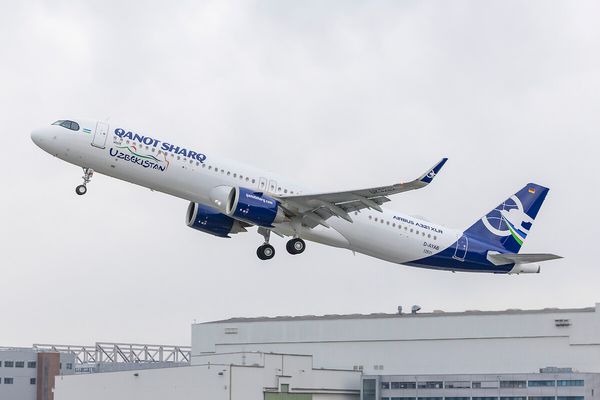Aviation in today's fast-paced world is constantly growing, with more and more advancements in airplane design shaping innovation and revolutionizing flight. When engineering aircraft, sustainability, fuel efficiency, passenger comfort, and safety are critical. Let's dive into these trends more deeply so we gain more understanding of their effects. If you are interested in designing signatures, check out mysign-studio reviews.

Fuel Efficiency and Sustainability
One of the key trends in modern airplane design is an increased focus on fuel efficiency and sustainability. Due to rising concerns regarding environmental effects and carbon emissions, aircraft manufacturers are prioritizing the development of greener aircraft that use alternative fuel sources such as biofuels or hydrogen for optimal performance and to minimize consumption and emission ratios for greater sustainability in aviation travel. By cutting consumption and emission rates in this way, aviation industries aim to open the way to more eco-friendly air travel in future years, reducing their overall carbon footprint and contributing to a more environmentally friendly industry.
Composite Materials
The increasing use of composite materials like carbon fiber-reinforced polymers is noted in plane design. These advanced materials offer outstanding strength and durability and reduce weight, making them the ideal material to replace traditional aluminium alloys for aircraft manufacturing. As a result, composites lead to significant weight reduction, better fuel economy, and improved performance. From fuselages and wings to interior components, composites are integral to modern airplane designs.
Advanced Aerodynamics
Aerodynamic innovations are revolutionizing how aircraft are engineered. By optimizing airflow and minimizing drag, engineers are improving fuel efficiency, range expansion, and the overall performance of airplanes. Furthermore, innovative features like winglets and sharklets are being incorporated into aircraft designs to decrease consumption further while increasing aerodynamic efficiency. By harnessing aerodynamic technology, aircraft manufacturers are creating faster, more ecologically friendly aircraft.

Quiet and Comfortable Cabins
Passenger comfort is of utmost importance in airplane design today, with manufacturers striving to craft cabins that are peaceful, relaxing, and conducive to restful flight experiences. These efforts include advancements in noise reduction technology and pressurization systems as well as ventilation/air quality controls that optimize space utilization while improving ventilation/quality controls; innovative seating configurations also aim at increasing the space/comfort ratio. Adding premium amenities like personalized entertainment options, ergonomic seating arrangements, and adjustable lighting create an experience unlike any other when flying an aircraft cabin today - creating the ultimate travel experience!
Advanced Avionics
Avionics technology advances are revolutionizing how airplanes are operated and managed, equipping modern planes with sophisticated flight management systems, autopilot features, and digital cockpit displays to increase situational awareness and safety. Fly-by-wire controls and predictive maintenance systems have also become part of modern designs to boost reliability while decreasing maintenance costs; advanced avionics enables pilots to more quickly adapt to changing weather conditions while keeping both passengers and crew members protected safely.
Pioneering Sustainable Solutions
Electric and hybrid propulsion systems have emerged as promising sustainable alternatives to traditional gas turbine engines, offering potential improvements in fuel efficiency, emissions reductions, and noise suppression. Manufacturers and researchers alike are researching this form of propulsion technology commercially and for general aviation; battery improvements enable electric propulsion technology. By investing in such research efforts, aviation lays down an eco-friendly foundation.

Autonomous Flight
Autonomous flight promises significant advancements for the aviation industry in terms of efficiency, safety, and cost efficiency. Although passenger planes equipped with autonomous technology might still be years from wide deployment, technological innovations aimed at increasing safety and optimizing operational efficiencies are already beginning to permeate aircraft systems. Automated takeoff and landing systems and autopilot features that navigate complex airspace are revolutionizing pilot roles while opening up autonomous flight as an option. Although regulatory approval and public acceptance remain challenges, their potential benefits continue to drive research efforts across aviation industries worldwide.
Urban Air Mobility
Urban Air Mobility (UAM) is an emerging industry that revolutionizes urban transportation through electric vertical takeoff and landing (eVTOL) aircraft for short-distance travel within urban environments. Flying taxis promise to ease traffic congestion, shorten travel times, and offer more eco-friendly alternatives than conventional ground transport systems. UAM has quickly emerged as an attractive solution to urban mobility challenges thanks to electric propulsion, battery technology, and autonomous flight systems advances. Although regulatory and infrastructure hurdles must be cleared before UAM becomes widely adopted in cities worldwide, industry stakeholders and investors remain enthusiastic.
Conclusion
Trends in airplane design are revolutionizing aviation technology, from fuel-efficient engines and lightweight composites, advanced aerodynamics, electric propulsion systems, and fuel cell technologies to 'greener' aircraft designs engineered for passenger travel that reduce environmental impacts while improving passenger experiences and decreasing environmental footprint. Technology continues to advance, so there will no doubt be further advancements enabled thanks to future airplane designs, promising an even brighter and more sustainable future of air travel!
KLM Strengthens European Network with Three Scenic Routes » Wizz Air Relaunches Suceava Base with Two A321neos and Seven New Routes » U.S. Government Admits Liability in Fatal Mid-Air Collision »
Comments (0)
Add Your Comment
SHARE
TAGS
INFORMATIONAL Aerospace Boeing Airbus Bombardier CRJ ERJ Embraer AntonovRECENTLY PUBLISHED
 Should Students Have Homework? Better After-School Balance
Is homework bad for students? Explore learning benefits, stress, sleep, and smarter workload limits, so after-school time stays balanced.
STORIES
READ MORE »
Should Students Have Homework? Better After-School Balance
Is homework bad for students? Explore learning benefits, stress, sleep, and smarter workload limits, so after-school time stays balanced.
STORIES
READ MORE »
 Air Canada Rouge to Launch Boeing 737 MAX 8 Operations
Air Canada has officially confirmed a strategic shift for its leisure subsidiary, Air Canada Rouge, announcing that Boeing 737-8 (MAX 8) operations are slated to begin in late Q1 2026. The move marks the beginning of an ambitious year-long transition that will see Rouge evolve into an all-Boeing 737 operator.
ROUTES
READ MORE »
Air Canada Rouge to Launch Boeing 737 MAX 8 Operations
Air Canada has officially confirmed a strategic shift for its leisure subsidiary, Air Canada Rouge, announcing that Boeing 737-8 (MAX 8) operations are slated to begin in late Q1 2026. The move marks the beginning of an ambitious year-long transition that will see Rouge evolve into an all-Boeing 737 operator.
ROUTES
READ MORE »
 Qanot Sharq Takes Delivery of First Airbus A321XLR to Transform Central Asian Long Haul Travel
Uzbekistan’s premier private carrier, Qanot Sharq, has officially taken delivery of its first Airbus A321XLR. The delivery, which took place today at the Airbus facility in Hamburg, makes Qanot Sharq the launch operator for the ultra-long-range narrow-body in the Commonwealth of Independent States (CIS) and Central Asia.
ROUTES
READ MORE »
Qanot Sharq Takes Delivery of First Airbus A321XLR to Transform Central Asian Long Haul Travel
Uzbekistan’s premier private carrier, Qanot Sharq, has officially taken delivery of its first Airbus A321XLR. The delivery, which took place today at the Airbus facility in Hamburg, makes Qanot Sharq the launch operator for the ultra-long-range narrow-body in the Commonwealth of Independent States (CIS) and Central Asia.
ROUTES
READ MORE »



